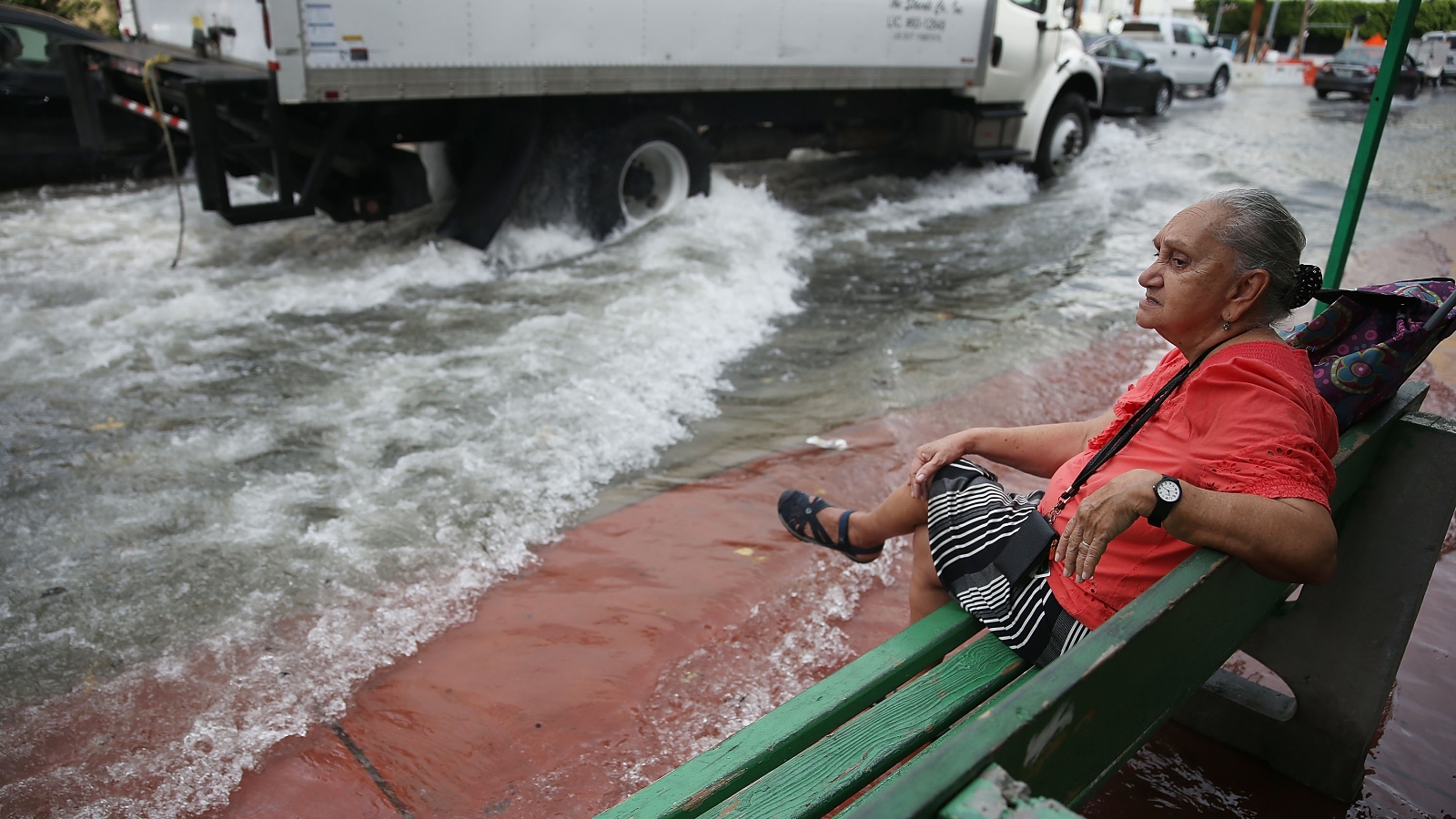As sea levels rise by multiple feet in the coming decades, communities along the coastal United States will face increasingly frequent flooding from high tides and tropical storms. Thousands of homes will become uninhabitable or disappear underwater altogether. For many in these communities, these risks are poised to drive migration away from places like New Orleans, Louisiana, and Miami, Florida — and toward inland areas that face less danger from flooding.
This migration won’t happen in a uniform manner, because migration never does. In large part this is because young adults move around much more than elderly people, since the former have better job prospects. It’s likely that this time-tested trend will hold true as Americans migrate away from climate disasters: The phenomenon has already been observed in places like New Orleans, where elderly residents were less likely to evacuate during Hurricane Katrina in 2005, and in Puerto Rico, where the median age has jumped since 2017’s Hurricane Maria, as young people leave the U.S. territory for the mainland states.
A new paper published in the prestigious Proceedings of the National Academy of Sciences offers a glimpse at the shape and scale of this demographic shift as climate change accelerates. Using sea-level rise models and migration data gleaned from the latest U.S. Census, the paper projects that outmigration from coastal areas could increase the median age in those places by as much as 10 years over the course of this century. That’s almost as much as the difference between the median age in the United States and the median age in Japan, which is among the world’s most elderly countries.
Climate-driven migration promises a generational realignment of U.S. states, as coastal parts of Florida and Georgia grow older and receiving states such as Texas and Tennessee see an influx of young people. It could also create a vicious cycle of decline in coastal communities, as investors and laborers relocate from vulnerable coasts to inland areas — and in doing so incentivize more and more working-age adults to follow in their footsteps.
“When we’re thinking about the effect of climate migration on population change, we have to think beyond just the migrants themselves and start thinking about the second order effects,” said Mathew Hauer, a professor of geography at Florida State University and the lead author of the paper.
In his previous research, Hauer has produced some of the only nationwide climate migration projections for the United States. His previous papers have modeled a slow shift away from coastlines and toward inland southern cities such as Atlanta, Georgia, and Dallas, Texas. Millions of people could end up joining this migratory movement by 2100. The new paper attempts to add a novel dimension to that demographic analysis.
“It’s a really large amount of aging in these extremely vulnerable areas,” said Hauer. “The people who are left behind are much older than we would expect them to be, and conversely, the areas that gain a lot of people, they get younger.”
The knock-on effects of this kind of demographic shift raise thorny problems for aging communities. A lower share of working-age adults in a given city means fewer people giving birth, which can sap future growth. It also means fewer construction workers, fewer doctors, fewer waiters, and a weaker labor force overall. Property values and tax revenue often decline as growth stalls, leading to an erosion of public services. All these factors in turn push more people to leave the coast — even those who aren’t themselves affected by flooding from sea-level rise.
“If Miami starts losing people, and there’s fewer people in Miami, then there’s a lower demand for every occupation, and the likelihood that somebody moves into Miami as opposed to moving to another location goes down as well,” said Hauer. “Maybe like a retiree from Syracuse, New York … who before might have thought about retiring in Miami, now they decide they’re going to retire in Asheville.”
This vicious cycle, which Hauer and his co-authors call “demographic amplification,” could supercharge climate migration patterns. The authors project that around 1.5 million people will move away from coastal areas under a future scenario with around 2 degrees Celsius of warming by 2100, but when they account for the domino effect of the age transition, that estimate jumps to 15 million. Hauer said that even he was surprised by the scale of the change.
The most-affected state will be Florida, which has long been one of the nation’s premier retirement destinations, as well as the coastlines of Georgia and South Carolina. Millions of people in these areas face significant risk from sea-level rise over the rest of the century, and even parts of fast-growing Florida will start to shrink as the population ages. Charleston County, South Carolina, alone could lose as many as 250,000 people by 2100, according to Hauer and his co-authors.
The biggest winners under this age-based model, meanwhile, are inland cities such as Nashville and Orlando, which aren’t too far from vulnerable coastal regions but face far less danger from flooding. The county that includes Austin, Texas, could gain more than half a million people, equivalent to a population increase of almost 50 percent. Many of these places have already boomed in recent years. Austin, for instance, saw an influx of young newcomers from California during the COVID-19 pandemic.
The new study offers welcome insight into the demographic consequences of climate migration, according to Jola Ajibade, an associate professor of environmental science at Emory University who was not involved in the new research. But she cautioned that there are other factors that might determine who leaves a coastal area, most notably how much money that area spends to adapt to sea-level rise and flooding.
“I give [the researchers] kudos for even leading us in this direction, for trying to bring demographic differentiation into the question of who might move, and where,” said Ajibade. “But exposure is not the only thing you have to model, you also have to model vulnerability and adaptive capacity, and those things were not necessarily modeled. That could change the result.”
The authors note that they can’t account for these adaptation investments, and neither can they track migrants who might move within one county rather than from one county to another. Even so, Hauer says, the paper offers a clear signal that the future scale of climate migration is a lot larger than just the people who are displaced from their homes by flooding. Both coastal and inland areas, he said, need to be prepared for much larger demographic changes than they might be expecting.




